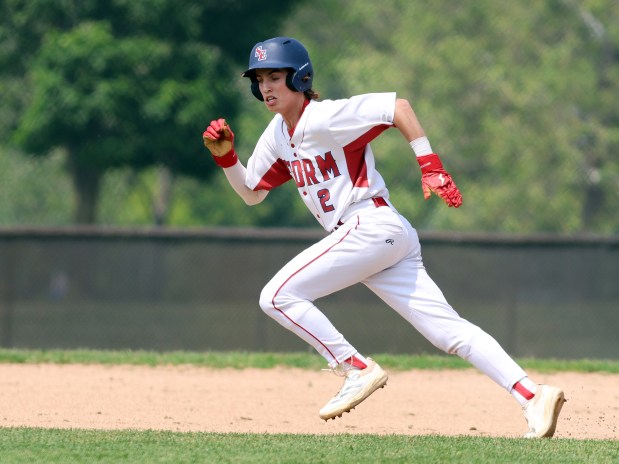With the first round of engineering for a reconfigured two-mile stretch of Crawford Avenue between Golf Road and Oakton Street in Skokie completed, the village moved forward last week with its plans to make the road more accessible for bicyclists.
Crawford Avenue, one of Skokie’s main north-south thoroughfares, is for the most part a four-lane road with a boulevard median. Though under Cook County Department of Transportation jurisdiction, the village held two public hearings to propose a reimagined Crawford Avenue with two travel lanes, a bike lane, and a lane for parked vehicles. Construction is anticipated to begin in 2026 and occur over at least two construction seasons, according to Skokie’s Communications and Community Engagement Director Patrick Deignan.
The bike lane will be designated by paint on the pavement, and physical barriers of any kind, such as posts to set off the bike lanes, are not yet included in the village’s approval. The village’s Director of Engineering, Russ Rietveld, said the road’s 35 mph speed limit is expected to stay the same under CCDOT’s request.
“That’s not to say that we can’t revisit them (CCDOT) during Phase II (of engineering), but it is their roadway,” Rietveld said.
According to village documents, the bike lanes proposed for Crawford Avenue north of Oakton Street have to do with traffic volume. On average, 1,300 more vehicles travel each day south of Oakton Street. “Therefore, the traffic demand and resulting land configuration needs are different,” village documents state.
Several public commenters asked Rietveld and Village Manager John Lockerby why the village was not placing the bike lane on the curb of the street, with parked vehicles creating a buffer for them from moving traffic.
“Our experience and our conversations with bicyclists is that this is actually preferred,” Rietveld said. “Drivers are more in tune with there being a bike lane over their shoulder as they open the door, whereas passengers are not, so there is a higher chance of a collision with a (vehicle’s) door.”
Lockerby also said cyclists have more space to react to hazardous doors swinging open if their lane is to the left of a parked car lane and they can swerve onto an “escape path” away from a vehicle as long as there isn’t a vehicle in the travel lane.
Frequent public commenter Kimberly Polka asked if protected bike lanes, which would have physical protection such as plastic or concrete bollards, were considered, given the number of recent cyclists killed in vehicle crashes in the area. In Skokie, two cyclists were killed in a one-month span. Three more cyclists and one pedestrian were also killed in the greater area.
Lockerby said there were a number of things to consider when designing the roadway. “One of the design principles that is included here is preserving as many trees as possible. And so as the median gets narrower, the likelihood that the trees will not survive increases. So all of these different variables have been taken into consideration,” Lockerby said. “It was determined that the best location in this situation is in between the parked cars and the vehicle lane of traffic.”
“I’m a biker and a walker,” said Trustee Edie Sue Sutker. “I have seen people hit by the door. I do understand the speed issue. So maybe an educational piece about that would be (important).”
The next step of the process would be Phase II of design engineering for the road, which is anticipated to cost $1.37 million, with the village paying $152,000 and Cook County paying the rest. .




